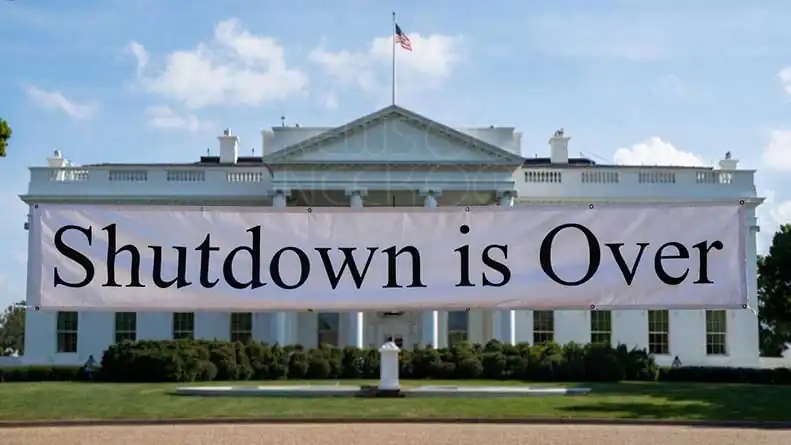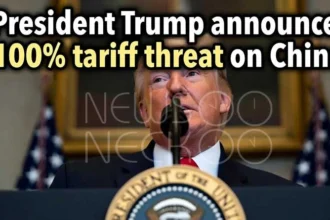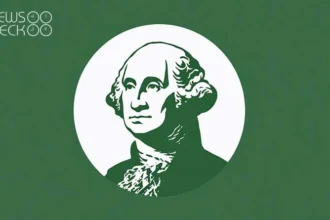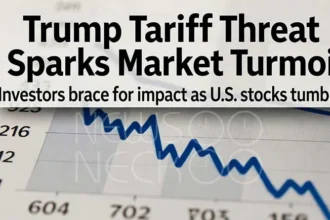The longest government shutdown in American history is over. But the fight that caused it is far from finished.
On Wednesday night, President Donald Trump picked up a pen and signed his name on a piece of paper. With that signature, the longest government shutdown in American history—43 days—finally ended.
For hundreds of thousands of federal workers who had been going to work without paychecks, it meant they could finally pay their rent. For travelers stuck in endless airport security lines, it meant getting home. For families standing in food bank lines for the first time in their lives, it meant a small measure of dignity restored.
But if you think this story has a happy ending, you haven’t been paying attention to Washington.
When the Paychecks Stopped
Imagine showing up to work every day, doing your job, and not getting paid. Not for a week. Not for two weeks. For 43 days.
That was reality for roughly 800,000 federal employees. Some were forced to work anyway—airport security officers, prison guards, air traffic controllers. They were deemed “essential,” which is a bureaucratic way of saying: you can’t leave, but we’re also not paying you.
Others were told to stay home. They were “furloughed,” which is a gentler word for: we don’t need you right now, and we’re definitely not paying you.
Financial stress doesn’t begin to describe it. These weren’t people living paycheck to paycheck because they were irresponsible. They were living paycheck to paycheck because their government decided to use them as bargaining chips.
Food banks across the country reported something they’d never seen before: federal workers, some in uniform, standing in line for groceries. Coast Guard families. TSA agents. People who’d always been the helpers suddenly needed help themselves.
At airports, the shortage of workers created chaos. Security lines stretched for hours. Flights were delayed or canceled. Travelers missed connections, lost vacation days, or simply gave up and went home.
The Fight Nobody Won
So what was this all about?
The simple answer: taxes and healthcare. But in Washington, nothing is ever simple.
Democrats wanted to extend an enhanced tax credit that helps people afford health insurance through the Affordable Care Act—what most people still call Obamacare. Without this credit, millions of Americans would see their insurance costs jump dramatically at the end of the year.
Republicans said no. They argued this was a separate policy fight that shouldn’t be tied to keeping the government running. Pass a basic spending bill first, they said. We’ll argue about healthcare later.
Democrats didn’t trust that “later” would ever come. They’d seen this movie before. So they refused to vote for any spending bill that didn’t include the tax credit extension.
And so the government shut down. September 19th came and went. October arrived, bringing a new budget year with no budget. Days turned into weeks. Weeks stretched past a month.
President Trump didn’t help matters. During the shutdown, he took what observers called “unprecedented unilateral actions”—canceling projects, trying to fire federal workers, doing everything he could to pressure Democrats into giving up.
When he finally signed the bill on Wednesday night, Trump made it clear he blamed Democrats for everything. “You should not forget this,” he told Americans. “When we come up to midterms and other things, don’t forget what they’ve done to our country.”
The Vote That Changed Nothing
The House of Representatives passed the funding bill on Wednesday with a vote of 222 to 209. It was almost entirely along party lines—Republicans voting yes, Democrats voting no. The Senate had already passed it on Monday.
Notice something? The bill Democrats opposed passed anyway. Which means they lost the fight over the tax credits.
For now.
“This fight is not over,” Democratic leader Hakeem Jeffries declared. “We’re just getting started.”
On the House floor, the debate got heated. Republicans accused Democrats of deliberately causing pain to win a political argument.
“They knew it would cause pain and they did it anyway,” said Speaker Mike Johnson.
Democrats fired back. Earlier this year, they pointed out, Republicans rushed through tax breaks that mostly benefit wealthy Americans. But when it comes to helping ordinary people pay for healthcare? Suddenly there’s no money, no time, no votes.
“This bill leaves families twisting in the wind with zero guarantee there will ever, ever be a vote to extend tax credits to help everyday people pay for their health care,” said Representative Jim McGovern of Massachusetts.
Even some Republicans seemed exhausted by the whole affair. Representative Tom Cole, chairman of the House Appropriations Committee, basically admitted the shutdown was pointless.
“We told you 43 days ago from bitter experience that government shutdowns don’t work,” Cole said. “They never achieve the objective that you announce. And guess what? You haven’t achieved that objective yet, and you’re not going to.”
What It All Means
Here’s the thing about government shutdowns: they never accomplish what the people who cause them claim they will accomplish. They just hurt people.
They hurt the single mother who works for the National Park Service and can’t pay for her kid’s asthma medication. They hurt the elderly veteran trying to get through an airport to see his grandchildren. They hurt small business owners near national parks who lose customers when the parks close.
The people making these decisions—the members of Congress, the president—they’ll be fine. They still get paid during shutdowns. Their health insurance doesn’t lapse. They’re not standing in food bank lines.
It’s everyone else who pays the price.
The 43-day shutdown is over. Federal workers will get back pay for the time they missed. Airports will return to normal. Food bank lines will shrink.
But as Democratic leader Jeffries promised, the fight isn’t over. The tax credit issue remains unresolved. The partisan divisions in Washington are as deep as ever. And both parties are already looking ahead to the midterm elections, ready to weaponize this shutdown in their campaign ads.
Which means one thing is almost certain: this isn’t the last shutdown we’ll see. It’s just the longest one so far.
For the federal workers finally getting paychecks again, that’s a terrifying thought. Because next time the politicians in Washington decide to have a showdown, they’ll be the ones caught in the crossfire again.
And politicians, it seems, never learn.
Based on government shutdown developments as of November 2025.













